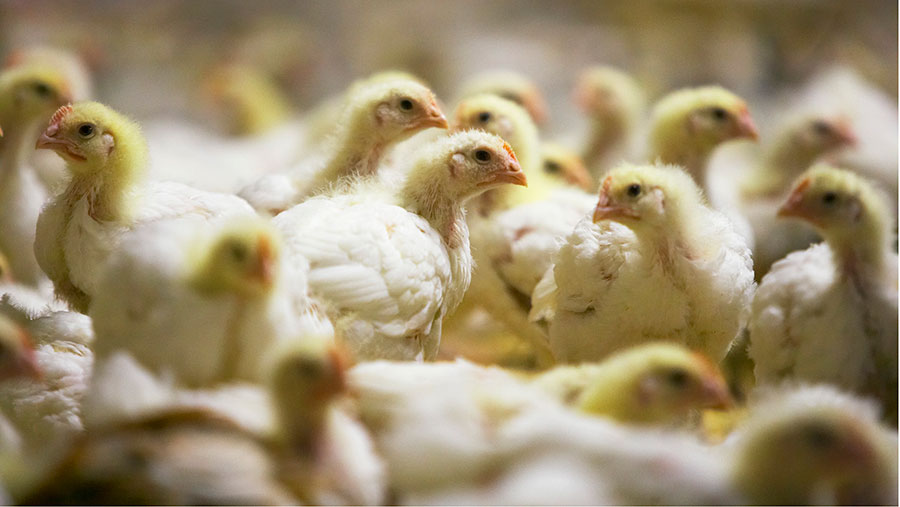Four more years of growth for poultry sector

Poultrymeat continues to benefit from growing demand and a healthy image. Tony McDougal assesses a recent market study.
Growth in the value of the UK poultry market will continue over the next four years despite challenges posed by health, ethical and environmental consumer concerns.
The market will be worth £5.74bn by 2019, which represents a rise in value of 8.5% from this year, and more than 32% since 2010, according to a new Key Note “Poultry” report released earlier this autumn.
The anticipated 2.7% rise in the UK population to 66.7m by 2019, coupled with a predicted year-on-year increase in gross domestic product (GDP) of between 2.3-2.6% will lead to more predictable market conditions, a strengthening of consumer purchasing power and increased sales of poultry.
See also: Low prices here to stay, broiler growers are warned
On the downside, the report says that hygiene concerns in the supply chain – in particular, fears over campylobacter contamination – may affect demand this year, with the ongoing debate on containment measures leading to a rise in consumer awareness.
But it adds that the chicken sector is expected to recover and move forward in 2016 and 2017, growing by 2.5% per year and then will take advantage of more secure market conditions and stable demand in 2018 and 2019.
Broilers lead the way
All sectors of the UK poultry market are predicted to rise in each of the years to 2019, with the chicken sector continuing to take the overwhelming majority of sales, rising from £4.34bn this year to £4.72bn in 2019 at current prices.
The value of the turkey sector, which currently accounts for 11% of the market, is expected to rise from £581m to £612m. Duck and goose sales will also continue to grow from £225m to £243m, and from £46m to £53m respectively.
Despite the positive overview, the report says there are a number of ethical and environmental concerns which are likely to become increasingly influential in the UK poultry market over the next few years.
These include producing poultry on a mass scale, rearing and slaughter conditions, use of antibiotics, GM animal feed and hygiene and disease, which are likely to continue to get media exposure.
The report says that these concerns are likely to drive people to move to purchasing ethically assured, free-range and/or organic meat, which will boost sales values, but may lead some to reduce their actual consumption of meat.
It also highlights that consumers like the Red Tractor logo in the way that it helps inform them about bird welfare and ethical considerations.
Recent trends
Looking at the past year, the report shows that poultrymeat sales rose by 1.6% in 2014, driven by increased consumption and improved sales for more expensive poultry cuts.
“Rising disposable income is slowly enabling better-off consumers to trade up from cheaper poultry products…to more expensive products such as duck, organic, free-range or corn-fed chicken,” says the report.
Consumption last year reached a five-year high, with the average UK consumer eating 33.1kg per year – a rise of 3.1% since 2010. Poultry consumption accounted for 41% of total meat consumption.
Price continues to be a key issue for consumers, who appreciate poultry’s value for money as well as its versatility and health credentials. Furthermore, retail prices continued to be extremely stable in the poultrymeat sector compared with other red meats, such as beef and lamb.
Fresh chicken, particularly whole roasts, dominate the market, proving much more popular than frozen chicken. Sales of fresh whole birds were 214,181t in 2014 compared with just 3,769t for frozen roll/roast.
Healthy food
“The popularity of chicken has grown in recent years,” says the report. “By contrast rival red meats have suffered from negative media exposure.”
While chicken has benefited from its high protein and low fat content, red meats have been hit by links to heart disease and cancer. Chicken is also praised for its versatility and the way it can be cooked in different ways.
The turkey market, which grew in value by 1.5% last year, is still struggling to shrug off its niche Christmas market image. “Sales will only grow outside of the season if the sector offers better value for money, which it generally has been unable to do,” says the report.
The duck sector, which saw a 2% rise in sales value, is benefiting from greater awareness of the Gressingham brand, which is perceived to be both ethical and high quality, the report authors suggest.
Interest in other poultry meats, such as ostrich, is driving consumption further. Discounter Aldi has been selling ostrich fillets, while Gressingham Foods has diversified to sell a growing range of game birds, including pheasant and Guinea fowl, with brand recognition helping to improve penetration.
- Poultry – Market Update 2015 is published by Key Note. Further information from Adam Pembrey on 0845 504 0452.

